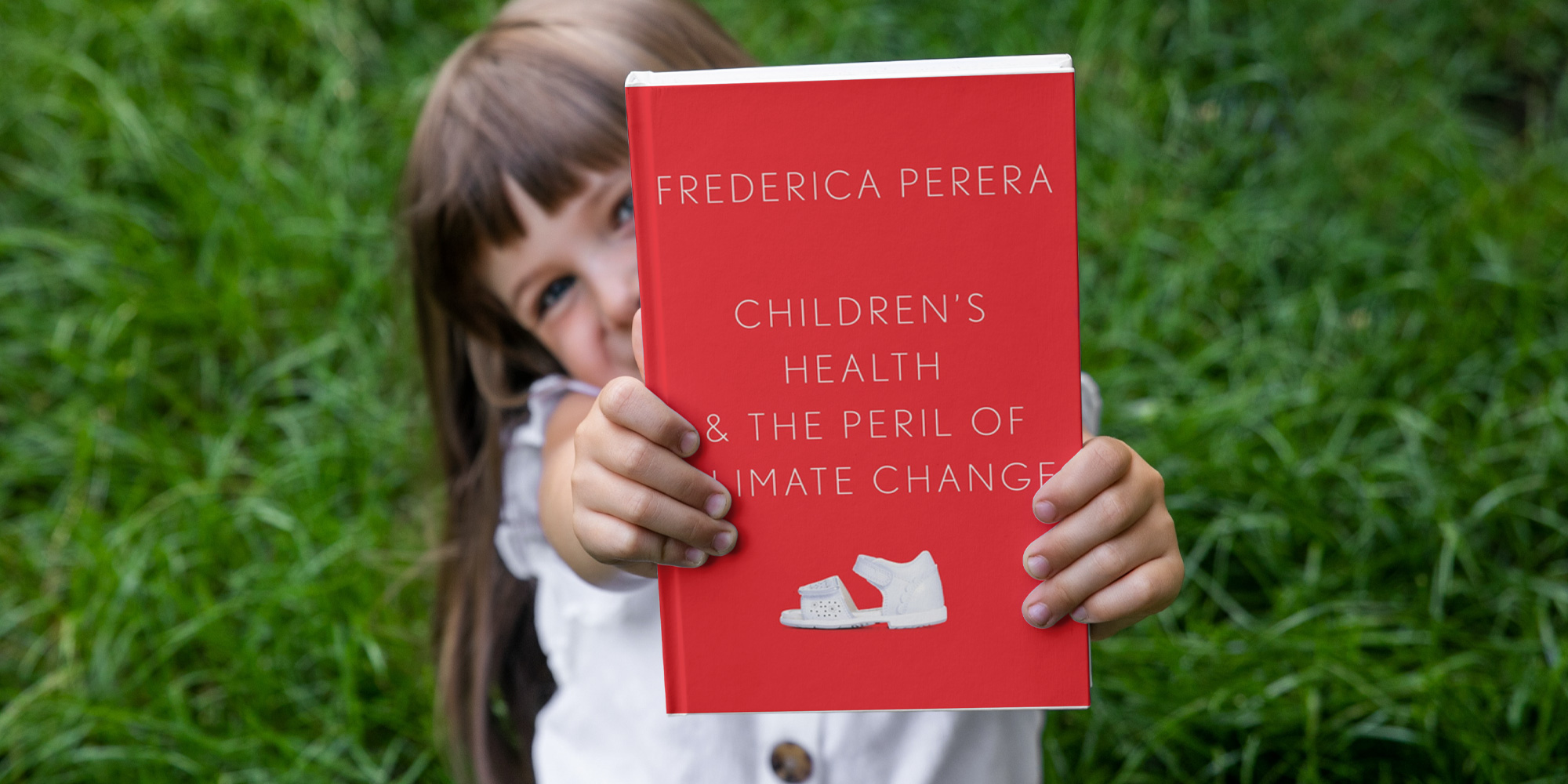Frederica P. Perera
Children’s Health and The Peril of Climate Change
Oxford University Press, 248pp
Every year, air pollution-related causes kill more than half a million children before their fifth birthdays, and an even greater number are afflicted by lasting damage to their developing brains and lungs. Many millions more are harmed by heat waves, severe storms, forest fire smoke, drought, infectious disease and trauma, all made more frequent due to climate change. Climate change and air pollution both stem from the production and combustion of fossil fuels (oil, coal and gas), which presently produce 85% of global primary energy.
Frederica Perera is an ideal guide of the crisis we’ve made. Founder of the Center for Children’s Environmental Health at Columbia University, she is a pioneer in molecular epidemiology and research on environmental causes of cancer and developmental disorders. Her new book Children’s Health and The Peril of Climate Change describes the full scope of the intergenerational injustice and harm of climate change and air pollution to young and developing bodies. Read our interview with Dr. Perera.
With authority and urgency, Perera articulates the sheer magnitude of the environmental impacts of fossil fuel and the health burden inflicted on children around the world. She makes technical terms and processes digestible, and balances expert takes with significant scientific research.
According to UNICEF, almost every child is exposed to at least one climate and environmental hazard, shock or stress. Half the world’s children live in countries at extremely high risk of water scarcity, flooding, cyclones, pollution, heatwaves and other effects of climate change.
The World Health Organization (WHO) estimates that more than 40% of the burden of environmentally related disease and more than 88% of the current load of climate change is borne by children under five years of age. Today, approximately 2 billion children in the world breathe toxic air at levels exceeding the guidelines set by WHO. “The forces hurling us toward climate disaster,” she writes, “are our built-in economic dependence on fossil fuel and our passivity due to ignorance, denial, or despair.”
As Perera explains, the speed of organ development in fetuses, infants and children makes them especially susceptible to airborne toxins. “The elaborately choreographed processes involved in early development,” she writes, “are exquisitely vulnerable to disruption by toxic exposures of many kinds, including adverse environmental conditions and physical toxicants, nutritional deprivation, and physical and psychological trauma and stress.”
Research during the past two decades has produced convincing evidence that early-life exposure to polycyclic aromatic hydrocarbons (PAH) in air pollution and petrochemical-based compounds like phthalates, BPA and PBDEs, which are in everyday consumer products, adversely affects children’s cognitive and behavioral development starting before birth. Even low exposure to these chemicals can disrupt normal hormonal function. Prenatal exposure to these chemicals has been variously associated with ADHD, autistic traits, reduction in children’s IQ, neurodevelopmental and reproductive abnormalities. PBDEs were majorly phased out in 2013, though exposure persists. Dubbed “forever chemicals,” they resist degradation and bioaccumulate in the fat tissue of living organisms.
Perera quotes Phillippe Grandjean, physician and epidemiologist at Harvard University: “The placenta and the blood-brain barrier were probably quite sufficient during millions of years of evolution to safeguard the fetus, but new harmful chemicals have emerged that can manage to pass through the barriers.”
Perera’s book adds nuance to the socioeconomic disadvantages that magnify the harm from pollution, like psychological stress from material hardship due to poverty, violence and racism.
As Bruce McEwan, the late professor of neuroscience at Rockefeller University, explains: “Not all stress is bad for you. Good stress comes from rising to a challenge, causing you to feel exhilarated when the body and brain are working properly to help you do so.” Toxic stress comes from insufficient resources to cope with unpredictable, threatening situations or daily hassles. The result is inflammation and suppression of immune function. Poverty is a source of harmful stress: In the United States, nearly 1 in 6 children live in a family with an annual income below the federal poverty line. More than 70% of these children are of color.
Offspring of more highly stressed women show changes in specific brain regions that play an important role in making decisions, regulating social behavior, and processing sensory input and memories. A longitudinal study showed that maternal psychosocial distress and high PAH exposure experienced concurrently by the mother during pregnancy increase the risk for anxiety, depression and other neurobehavioral problems in the children.
Climate-related drought and crop failure affect the young by depriving them of essential nutrients and calories. From conception to three years of age, the brain requires more nutrients than at other stages of development. Physical and psychological trauma due to climate-intensified severe weather events set the stage for long-term mental health problems. Further vulnerability comes from the long remaining lifespans of children. The biological insults that occurred early on may manifest as mental illness, heart disease, lung disease or neurodegenerative conditions in older age such as Parkinson’s or Alzheimer’s disease.
In a book sure to move parents, scientists, scholars, environmental enthusiasts and students alike, Perera rejects both sugarcoating and climate fatalism as she illustrates the impact on children’s brain development, and physical and mental health. She dedicates chapters to outlining the steps necessary to preserve life on the planet. She shares success stories of diverse activists, initiatives and organizations blazing the path of transformation, arguing, “We know that we have the knowledge and tools at hand to reduce emissions and strengthen children’s resilience, but equally essential are the societal and political changes that enable and accelerate those solutions in an equitable way.” Every person and institution has a part to play, from the arts, to media campaigns that reshape cultural narratives, to caregivers of the next generation.

Mark Swartz
Mark Swartz writes about efforts to improve early care and education as well as developments in the U.S. care economy. He lives in Maryland.



